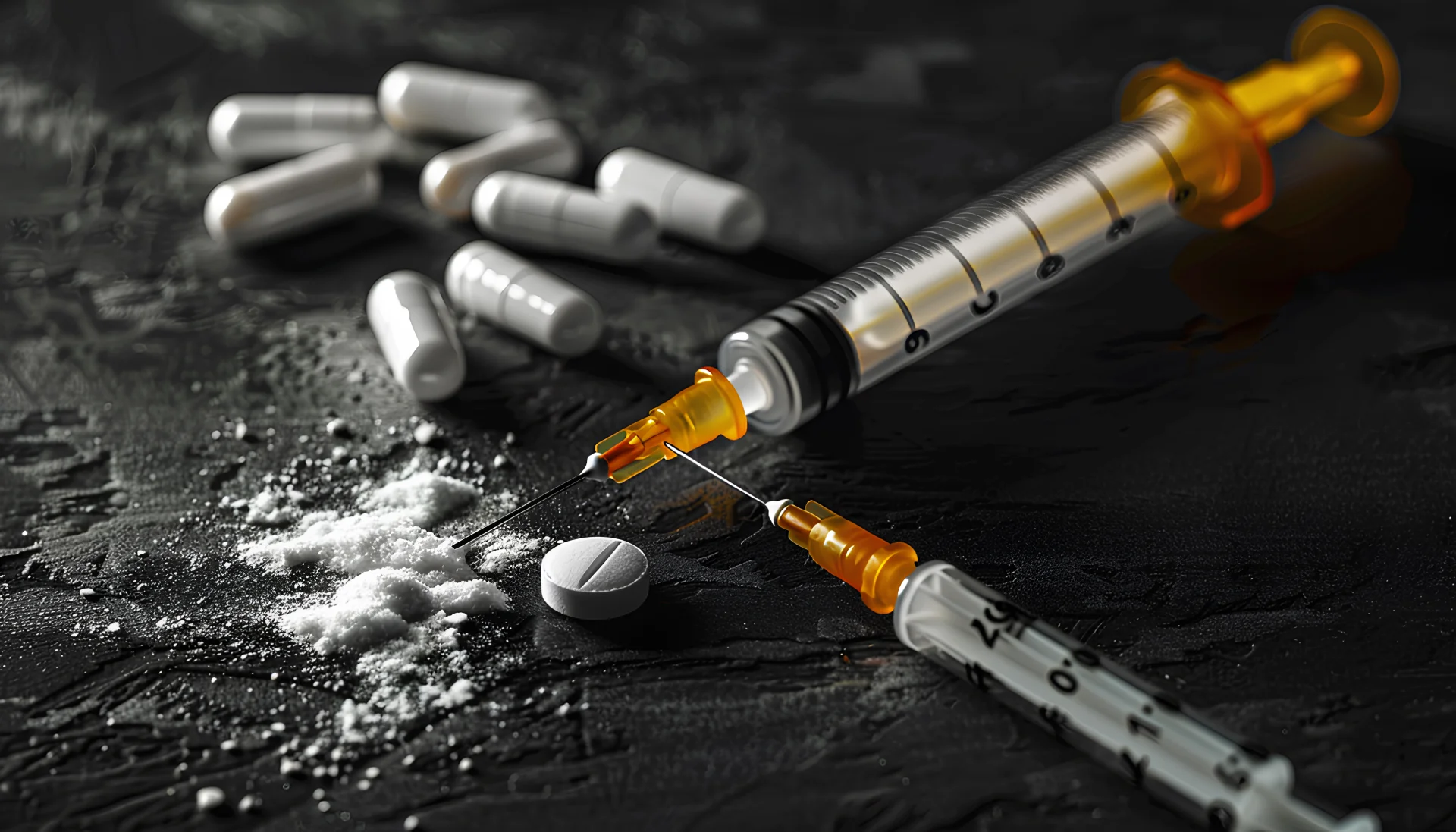Vyvanse Addiction Treatment in Long Island
A Long Island–focused guide to Vyvanse recovery how dependence forms, what withdrawal feels like, and which treatments work best (CBT/DBT, Contingency Management, dual-diagnosis care). We discreetly connect Nassau and Suffolk residents with licensed programs, interventions, and personalized aftercare.
Covered by most insurance plans
Available to help you 24/7
Table of Contents
Stimulant recovery is possible and having the right Long Island plan matters. Vyvanse (lisdexamfetamine) is a Schedule II prescription stimulant used for ADHD and binge-eating disorder. When misused (higher doses, non-prescribed use, or combining with other substances), it can drive tolerance, dependence, and a cycle of “push–crash” that disrupts sleep, mood, cardiovascular health, and everyday functioning. On Long Island, effective treatment pairs structured withdrawal support, evidence-based therapies (CBT/DBT, Contingency Management, motivational approaches), psychiatric care for co-occurring conditions, and practical aftercare that stabilizes work, school, and family life. Long Island Interventions discreetly connects you with vetted Nassau/Suffolk programs that fit your needs, schedule, and insurance.

What Is Vyvanse, And Why Is Its Misuse Dangerous?
Vyvanse is a central nervous system stimulant that your body converts into dextroamphetamine after ingestion. Therapeutically, that controlled increase in dopamine and norepinephrine can boost attention, reduce impulsivity, and smooth task initiation. In non-medical patterns taking more than prescribed, using without a prescription, snorting/chewing to hasten effects, or stacking with caffeine/other stimulants the same chemistry can overwhelm reward circuits. The brain adapts by dialling down its own neurotransmitter signaling; everyday activities feel “flat” without the drug, urges rise, and larger or more frequent doses become the new “normal.” That tolerance dependence loop is the engine of stimulant use disorder.
Red Flags: How Vyvanse Problems Show Up
- Activation signs: unusually high energy/talkativeness, jitteriness, jaw clenching, reduced appetite, long stretches without sleep, over-focusing on low-value tasks.
- Crash signs: late-day or weekend “wipeouts,” oversleeping/insomnia cycles, irritability, low mood, body aches, carb cravings.
- Function drift: missed classes/shifts, risky driving, conflicts at home, secretive refills or “lost” prescriptions, doctor-shopping, financial strain.
- Physical cues: dilated pupils, sweating at rest, palpitations, chest discomfort, dizziness, shortness of breath (medical evaluation warranted).
- Psychological cues: anxiety spikes, mood swings, suspiciousness, perfectionism turning compulsive, or in high-dose misuse brief psychotic symptoms.
Health Risks to Take Seriously
Stimulants elevate heart rate and blood pressure and can stress the cardiovascular system; mixing with alcohol, other stimulants, or decongestants magnifies risk. Sleep deprivation erodes judgment, worsens anxiety/depression, and fuels relapse. In vulnerable individuals, high-dose misuse can precipitate panic attacks or stimulant-induced psychosis. Emergency signs include chest pain, fainting, new confusion, severe shortness of breath, or suicidal thoughts seek urgent care 911.
Withdrawal & “Crash” What to Expect
Vyvanse withdrawal is mostly psychological/functional rather than medically dangerous, but it can be very uncomfortable and relapse-prone without support. A typical arc looks like this:
- 0–48 hours: fatigue, hypersomnia (or rebound insomnia), low mood/anhedonia, headaches, body aches, increased appetite, irritability, poor concentration.
- Days 3–7: mood volatility, anxiety, vivid dreams, “brain fog,” cravings (often connected to specific cues time of day, study/work blocks).
- Weeks 2–4: gradual improvement in energy and focus; cravings arrive in waves; sleep stabilizes with routine.
- 1–3+ months (for some): intermittent “PAWS” (post-acute symptoms) such as low motivation or sleep drift best handled with behavioral skills, structure, and support.
What Evidence-Based Treatment Looks Like on Long Island
Best outcomes come from combining therapies that calm the nervous system, rebuild routines, and directly reward healthy behaviors:
- Cognitive Behavioral Therapy (CBT): maps triggers (people/places/projects), restructures “all-or-nothing” thinking, teaches craving surfing, time-boxing, and task initiation without stimulant cues.
- Contingency Management (CM): proven for stimulants earns immediate, meaningful rewards for negative toxicology screens and functional milestones (attendance, sleep goals).
- Motivational Interviewing (MI): strengthens your own reasons for change, especially when ambivalence is high.
- DBT skills: emotion regulation and distress tolerance to ride out urges and performance pressure without dosing.
- Sleep recovery plan: fixed wake time, light exposure, caffeine cut-off, screen limits, exercise timing, and short-term, non-addictive sleep aids when appropriate.
- Dual-diagnosis psychiatry: treat co-occurring ADHD, anxiety, depression, OCD, or BED with non-addictive strategies when possible (e.g., SSRIs, SNRIs, atomoxetine/guanfacine for ADHD, therapy for BED) and tighten monitoring when a therapeutic stimulant is indicated.

Medication Notes (Set Expectations)
There’s no FDA-approved “anti-stimulant” detox medication. Clinicians may use targeted, short-term prescriptions for sleep, anxiety, or mood as needed; some patients benefit from non-stimulant ADHD options or antidepressants for persistent depression/anxiety. Any medication strategy should be individualized, time-limited when possible, and paired with therapy and routine changes. Avoid substituting one habit-forming agent for another.
Levels of Care Across Nassau & Suffolk
- Residential (inpatient): 24/7 structure when use is severe, relapse is repetitive, or home/study environment is too cue-laden.
- Partial Hospitalization (PHP) / Intensive Outpatient (IOP): daytime therapy several days per week with CM, CBT/DBT, psychiatry, and family work; ideal for students and professionals.
- Outpatient & coaching: weekly therapy, skills groups, academic/vocational coaching, and accountability once stable.
- Adolescent/college tracks: coordination with LI school districts and nearby colleges (Hofstra, Adelphi, Stony Brook, Nassau/Suffolk CC) for academic accommodations and return-to-learn planning.
Relapse-Prevention & Harm Reduction
- Replace “performance dosing” with a repeatable day plan: fixed wake time, prioritized task list (3 MITs), movement, meals, and a shut-down ritual.
- Audit triggers: deadlines, all-nighters, high caffeine/energy drinks, certain peers, and unstructured weekends; create “If-Then” scripts for each.
- Secure meds: lockbox, single prescriber, pharmacy fills on a set day; avoid mixing with alcohol or other stimulants/decongestants.
- Rebuild natural dopamine: sleep, protein + complex carbs, sunlight, social connection, exercise you’ll actually do.
How Long Island Addiction Resources Helps
We’re a confidential intervention and care-navigation service based on Long Island. We do not operate a detox or rehab unit; instead, we verify benefits and match you to vetted local programs (residential, PHP/IOP, outpatient, dual-diagnosis psychiatry) that deliver CM, CBT/DBT, and school/work-friendly schedules. We also coordinate professional interventions, transportation, family coaching (CRAFT), and step-down aftercare so you’re supported from first call through sustained recovery. If you need services outside our scope, we’ll refer you to a trusted affiliate promptly.
Get Help for Vyvanse Addiction in Long Island Today
If you or a loved one are ready to end your alcohol and drug use, there are many recovery options available near you in Long Island
Are you ready to take back control over your life?
Making the decision to seek help is one of the hardest and bravest steps you can take. We know that the recovery process is not always easy—there may be challenges along the way—but every step forward brings you closer to a life free from the weight of addiction.
Find treatment options covered by insurance















Let today be
your Day 1
We'll get on a call, assess your health history, and verify your insurance. Today is Day 1. We can't wait to celebrate Day 1000 with you!
Fill out this simple form and we’ll call you right back.
Frequently Asked Questions
We'll get on a call, assess your health history, and verify your insurance. Today is Day 1. We can't wait to celebrate Day 1000 with you!
Why is Vyvanse addictive?
Vyvanse increases dopamine and norepinephrine in the brain, creating feelings of focus and motivation. Over time, this can cause tolerance, dependence, and cravings, especially with non-medical use.
What are the signs of Vyvanse addiction?
Warning signs include restlessness, rapid speech, anxiety, irregular sleep, mood swings, weight loss, secrecy, and taking more medication than prescribed.
What happens when someone stops using Vyvanse?
Stopping suddenly can cause withdrawal symptoms such as fatigue, depression, sleep problems, increased appetite, and strong cravings.
What therapies help with Vyvanse addiction?
Effective therapies include Cognitive Behavioral Therapy (CBT), Dialectical Behavior Therapy (DBT), Contingency Management, and Motivational Interviewing to address emotional, behavioral, and situational triggers.
Can Vyvanse addiction occur in people with ADHD?
Yes. Even prescribed users can develop dependence if doses are increased too quickly or used improperly. Dual-diagnosis treatment helps manage ADHD safely during recovery.
